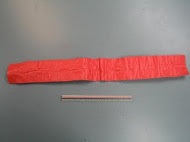
If you have a victim of a broken bone or injury, the doctor will apply a splint or cast to protect the injury. If the splint put is removable, you should ensure that you follow all the instructions given to avoid making the injured place worse. If a cast is put, follow the instructions given on the time that you need to put the first pressure on the splint. In most cases fiberglass tend to dry quickly compared to the ones made of plaster. When the cast can be used, you are not supposed to put a lot of weight on it for a long duration of time without taking a rest. To ensure that the injury get healed fast, you should never modify your cast or the splint or apply any form of powder under it. Make sure that no sand or dirt gets into the cast.
Swelling when you have a splint or cast
The cast or splint may feel tight after sometimes after the injury or surgery. This mostly happens because of the swelling that may occur. In order to reduce the chances of swelling, you need to keep the injured leg or arm raised above the heart within the first three days. When lying down, you should ensure that you use a pillow in order to prop up the leg or arm and prevent the injured part from hard surfaces. You can also put plastic bag with ice, wrap it in a towel and put it over the injured part. Do not allow the splint or cast to get damp or wet. You are supposed to ice the affected area for about fifteen minutes at a time each day.
Taking drugs
You should take nonsteroidal anti-inflammatory drugs to reduce inflammation and pain. Just like any other medications, make sure you adhere to the instructions and precautions given.
When to call a doctor
- If you cannot move the toes or fingers
- In case you develop severe pain that you suspect is as a result of swelling or when the splint or cast gets too tight.
- If your foot or hand gets numb
- You should also call a doctor if you feel burning or stinging on the skin.
In order to protect your injured joint or limb, you should try to keep up your muscle strength and tone. You may also be required by the doctor to relax and tense the muscles that are protected by the cast.
